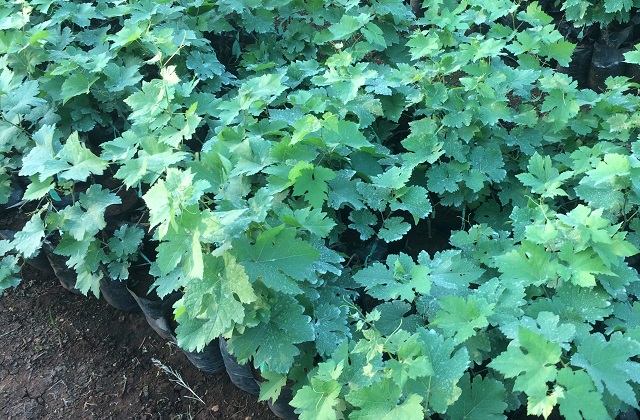One of the most crucial activities in December is the planting of a new vineyard using grafted vines. The whole month is ideal for plantation but the earlier it is done, the better it is. Planting an Indian vineyard with grafted vines requires making a plan beginning of July or August. There is a list of things to do such as finalising the grape variety, signing a contract with a winery, the source material for the vines, the plantation site, etc. Give the order for the vines and set out a strategy for planting of the vineyard. This is broken down into preparation of the site, marking the rows and digging pits, laying out the pipes and drip lines for irrigation, transport and planting of the vine and setting up stakes and trellis system.
Preparation
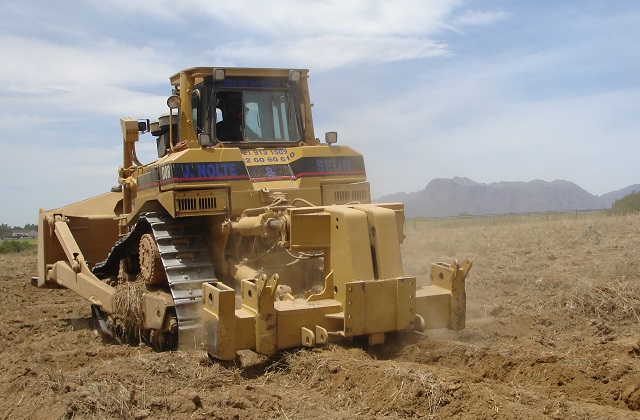
The grafted vines are procured from a good nursery so that they are of good quality and free from any viruses. In India, it is necessary to check for efficiently grafted material else mortality of vines is common, leading to missing vines. Preparation of the site should start after the monsoon ebbs. Mid- November is an ideal time. The land should ideally be prepared using a caterpillar type heavy equipment to rip the land strata. This is better than using an earthmover, as earthmovers or tractors turn the rich top soil inwards exposing the bottom soil. This is followed up by marking the rows using simple lime and defining the vine positions. Pits are then dug at these positions. Confirmation of exact number of vines is to be communicated to the nursery.
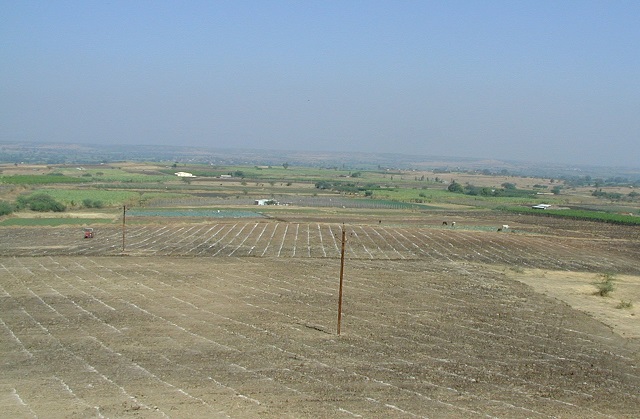
Irrigation set up
The Indian weather conditions are quite distinct with most of the annual rainfall happening over three to four months. The rest of the year is quite dry and hence irrigation is needed for 5=6 months. Earlier irrigation was done by flooding the vineyards, now rarely seen. The best way to irrigate is to use drip irrigation. The main line and lateral lines is set up and connected to the water source. The drip lines are then connected onto the lateral lines and laid on the marked lines. The lines then are tested out and the position of drippers are adjusted so that each vine gets adequate watering. Generally drippers would provide about 4 litres of water per hour. Depending on the soil type, the age of the vines and the season, the time of irrigation can be adjusted.
Plantation
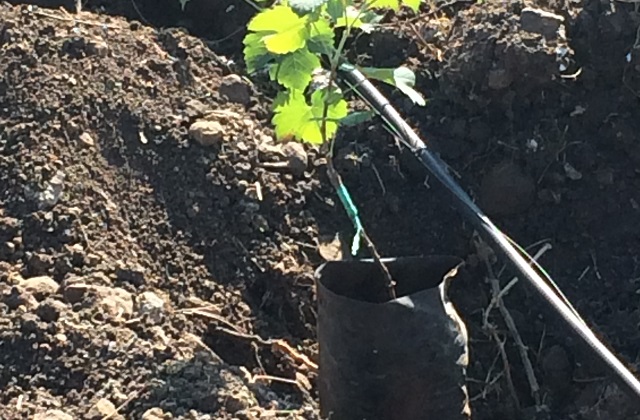
After the irrigation is set up, fertilisers are applied to the vineyard. Organic matter in the form of humic acid, vermicompost or mushroom farm waste is popularly used. Chemical fertilisers include urea and superphosphate along with magnesium, zinc and sulphate compounds. Once the watering system is on for a few days to wet the soil, the vines can be transported to the site. The vines can then be placed in the pits and covered with soil. Care should be taken to keep the graft union above the soil, else own root of the grafted vine could develop and make it into an own rooted vine. This will result in no benefits whatsoever desired from the root stock. After the planting of the vines bamboo sticks are placed near the vine and tied to it to keep the vine upright. Later, the trellis system will be put in place to support the vine in growing both vertically and horizontally. More will be covered on trellis systems options in another post.
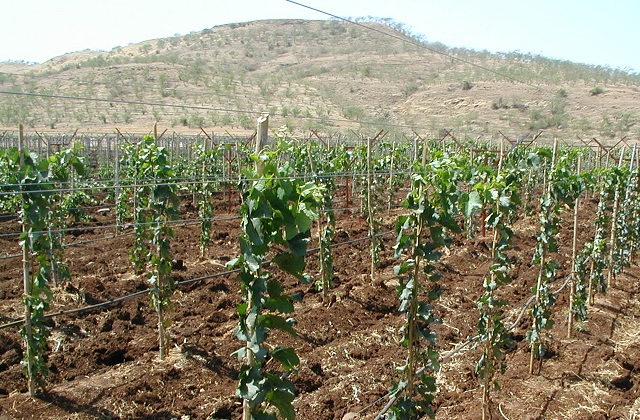
With the plantation done, care should now be taken to check for proper growth of the vines that will ensure a steady production of grapes.

